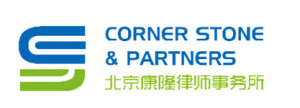On 23 April 2019, the 10th Session of the Standing Committee of the 13th National People’s Congress passed a decision on an amendment of China’s Trademark Law, and the revised clauses will be implemented as of 1 November this year. It’s the fourth amendment of the Trademark Law, following those made in 1993, 2001 and 2013.

Senior partner
Corner Stone & Partners
The overall trend of this amendment of the Trademark Law is that it continues to strengthen trademark protection, restrain preemptive registration and hoarding of trademarks from sources, facilitate the effective utilization of trademarks and bring them back to their essence, all of which could benefit the advancement of a legally transparent and international business environment.
There were many highlights in this amendment, which focused on the two major areas of regulation of bad-faith trademark applications and hoarding behaviour in registration, as well as an increase in legal compensation for trademark infringements.
Regulation of bad-faith trademark registration and hoarding behaviour
According to the Annual Development Report on China’s Trademark Strategy, the number of China’s trademark applications reached 7.37 million in 2018, while the number of applications from enterprises ranked the first on the list of national trademark applications reached 6,833 in 2018, both of which indicate significantly increased trademark protection awareness of Chinese enterprises.
However, there were also many attempts for illegal gains that disturbed market order, while bad-faith trademark applications for a free ride occurred occasionally, and the hoarding of trademarks for profits from transfer of registered trademarks instead of actual uses occurred frequently.
A prominent issue in current practice is the business model that trades preemptively registered trademarks as intangible assets, which make the most of thinkable trademark words already registered and bring great challenges for brand protection of domestic enterprises actually engaged in business operations.
There were also obstacles for the brands of foreign enterprises entering China due to preemptive registrations of corresponding trademarks, hence right holders had to spend time or large sums of money to purchase their own brands back from bad-faith trademark registrants. Those abnormal applications for trademark registration had seriously occupied trademark resources, distorted the original functions of trademarks, and disturbed the order of the market economy and trademark administration.
This amendment of the Trademark Law mainly focuses on bad-faith registrations “that are not filed for the purpose of use”, as well as restraint of such behaviour from different perspectives, to be specific:
In terms of applicant, content of “when the applications for registration of a trademark are not filed for the purpose of use, such malicious applications shall be rejected” has been added to article 4, section 1, which both limits the registration purpose of trademark applicants, and gives examiners the right to actively reject applications at the stage of preliminary examination with their authorities;
In respect of trademark agencies, provisions on examination obligations of trademark agencies have been added to article 19, section 3, which specifies that agencies are not allowed to accept entrustment for bad-faith trademark registration applications not for the purpose of use. Article 68 has also prescribed administrative punishments for a trademark agency’s deliberate acceptance of client’s entrustment for bad-faith trademark registration application not for the purpose of use.
As for opposition and invalidation procedures, “bad-faith trademark registration application not for the purpose of use is one of the reasons for opposition and invalidation” has been added to articles 33 and 44.
Increase in compensation for trademark infringements
The other highlight of this amendment of the Trademark Law is the increase in intensity of punishments for infringement of exclusive right to use a trademark, as well as an overall increase in compensation for trademark infringements.
The statutory maximum compensation for trademark infringements prescribed in Trademark Law has finally been increased under article 63. Alterations to this article have also reflected a further increase in the amount of exemplary damages for intellectual property right (IPR) infringements. It can be foreseen that costs for IPR infringements will be even higher in the future, and infringers will definitely pay a heavy price.
The fourth amendment of the Trademark Law has strengthened examination on use and proper purpose during trademark applications and after trademark registrations, which should effectively reduce preemptive registration and hoarding of trademarks. The amendment has also increased the intensity of punishment for trademark infringements, which should effectively reduce trademark infringements and play an important role in regulating the market.
Brenda Zhao is a senior partner at Corner Stone & Partners

Corner Stone & Partners
1905, Tower B, Tian Yuan Gang Centre,
No. 2 Dongsanhuan North Road, Chaoyang District,
Beijing 100027, China
Website: www.cornerstoneip.com.cn
Contact details:
Tel: +86 10 84464600 Ext.806
Email: brenda.zhao@cornerstoneip.com.cn

























